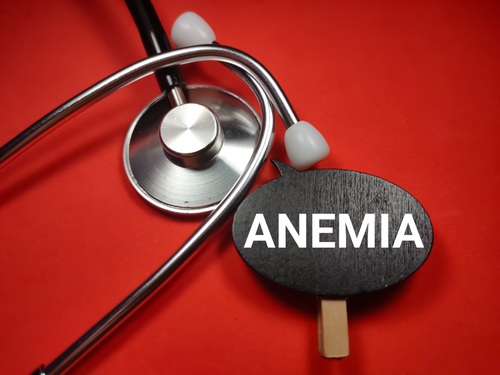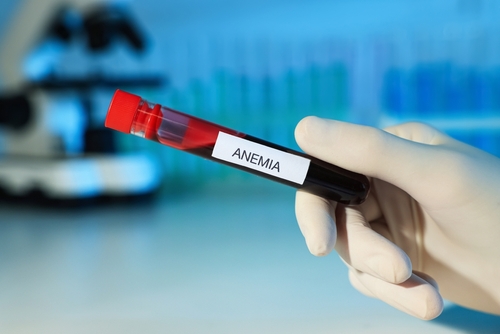
Patients with chronic kidney disease (CKD) frequently develop anemia, defined by the World Health Organization as a hemoglobin concentration of <13 g/dL in men and <12 g/dL in women. As estimated glomerular filtration rate (eGFR) declines, the prevalence of anemia increases, possibly via the development of erythropoietin deficiency and resistance and a heightened inflammatory state. Individuals with anemia are at increased risk for adverse cardiovascular outcomes and death.
Erythropoiesis-stimulating agents (ESAs) mitigate the need for blood transfusions in patients with anemia; however, the use of ESAs has been associated with increased risk of cardiovascular disease. Treatment targets have been scaled back to minimize risk, and ESAs are generally not considered unless for the treatment of severe anemia.
According to Danielle K. Farrington, MD, MHS, and colleagues, earlier studies regarding the burden of anemia by level of eGFR were based on older data and small sample sizes. There are few data available on the prevalence of iron deficiency as a cause of anemia or on the prevalence of vitamin B12 deficiency, both treatable causes of anemia in patients with CKD.
The researchers conducted a large cross-sectional and prospective cohort study to describe the burden of anemia by level of eGFR and to characterize the frequency of screening for low iron test results and vitamin B12 deficiency, the presence of both low iron test results and vitamin B12 deficiency by level of eGFR, and the receipt of ESAs in anemia. The study was designed to test the hypothesis that there is a strong association between severe anemia and low eGFR, and that iron deficiency is common when tested for but iron studies are not commonly conducted.
The outcomes of interest were incident kidney failure with renal replacement therapy (KRT), cardiovascular disease (coronary heart disease, stroke, or heart failure, whichever occurred first), and death. Data were extracted from the Optum Labs Data Warehouse that contains deidentified claims and electronic health record data from a wide range of health care centers in the United States.
The analysis included data from 5,004,957 individuals across 57 health care organizations. Forty-two percent of the cohort were men, the mean age was 54 years, and 10.1% were Black. Mean hemoglobin was 14 g/dL, and mean eGFR was 87 mL/min/1.73 m2. Only 8.3% of individuals had available data on urinary albumin-creatinine ratio (UACR), but 35.6% had urine dipstick results. Men and women were similar in those baseline characteristics. Of the total population, 14.9% had diabetes mellitus, and 39.8% had hypertension.
In men, across eGFR categories of 60 to 74, 45 to 59, 30 to 44, 15 to 29, and <15 mL/min/1.73 m2, the prevalence of severe anemia was 1.3%, 3.1%, 7.5%, 17.4%, and 29.7%, respectively. The corresponding values in women were 1.9%, 3.8%, 8.6%, 19.4%, and 37.6%.
There was a strong association between lower eGFR and increased prevalence of anemia across all categories of hemoglobin. The pattern was similar in men and women; however, across all categories of eGFR, anemia was more prevalent in women than in men. Hemoglobin <9 g/dL was present in 18.8% of women compared with 15.2% of men with an eGFR <15 mL/min/1.73 m2
Following adjustment for age, race, and health care organization, the prevalence of different categories of anemia remained very strongly associated with lower eGFR. Adjusted prevalence increased more sharply with lower eGFR for the lower hemoglobin categories such as <9 g/dL as compared with higher hemoglobin categories such as 12 to 13 g/dL. The pattern was similar in men and women. In the fully adjusted model (age, race, eGFR, prevalent cardiovascular disease, hypertension, UACR, diabetes mellitus, smoking, and health care organization), there were associations between older age and Black race and a higher prevalence of anemia. Extremes of higher eGFR were also associated with higher prevalence of anemia.
Among patients with anemia, iron studies and checks of levels of vitamin B12 were infrequent. Of the men with anemia, only 15.6% and 11.7% had iron studies and vitamin B12 levels available, respectively. The respective percentages in women were 19.6% and 13.9%. Among those tested, low iron test results were highly prevalent: 60.4% of men and 81.3% of women. In both men and women with anemia, the prevalence of low iron test results was lower with lower eGFR; low iron results were more common in women than in men.
Across all categories of eGFR, vitamin B12 deficiency was rare. Total prevalence was 3.0% in men with anemia and 3.5% in women with anemia. The average mean corpuscular volume values were normal across all categories of eGFR, indicating that anemia was most frequently normocytic. The prevalence of low iron test results in those with eGFR >60 mL/min/1.73 m2 using an alternate ferritin cutoff for the general population demonstrated that even in severe anemia ESA use was extremely uncommon in all categories of eGFR.
Following adjustment for age, race, eGFR, prevalent CKD, hypertension, UACR, diabetes mellitus, smoking, and health care organization, there was an association between lower hemoglobin and an increased risk of KRT, cardiovascular disease, coronary heart disease, stroke, heart failure, and death. The adjusted hazard ratio for death was 2.91 (95% CI, 2.82-3.00) in men with hemoglobin <9 g/dL compared with men with hemoglobin 12 to 13 g/dL.
The presence of low iron test results in anemia was generally associated with a decreased risk of adverse outcomes compared with the absence of low iron test results in those tested.
The authors cited some limitations to the study, including reliance on International Classification of Diseases codes for medical diagnoses, obtaining data on mortality from claims data, and the observational design of the study.
In conclusion, the researchers said, “Overall, our study provides generalizable, precise estimates from a large clinical population on the full spectrum of anemia severity. We quantify the association of low eGFR with severe anemia in both men and women. We find that studies to detect iron deficiency are conducted in less than one in five patients with anemia regardless of eGFR level, suggesting a need for greater testing and potentially for iron supplementation. We document that the presence of anemia is consistently associated with incident KRT, cardiovascular disease, coronary heart disease, stroke, heart failure, and death in both men and women independent of other risk factors. Future studies should investigate safe strategies to mitigate the risks associated with anemia in CKD.”
Takeaway Points
- Researchers reported results of a study designed to characterize the burden, risk factors, and risks associated with anemia in chronic kidney disease.
- In fully adjusted models, there was a very strong association between lower estimated glomerular filtration rate and increased prevalence of anemia.
- Among those tested for iron and vitamin B12 levels, use of erythropoiesis-stimulating agents was uncommon.







 © 2025 Mashup Media, LLC, a Formedics Property. All Rights Reserved.
© 2025 Mashup Media, LLC, a Formedics Property. All Rights Reserved.